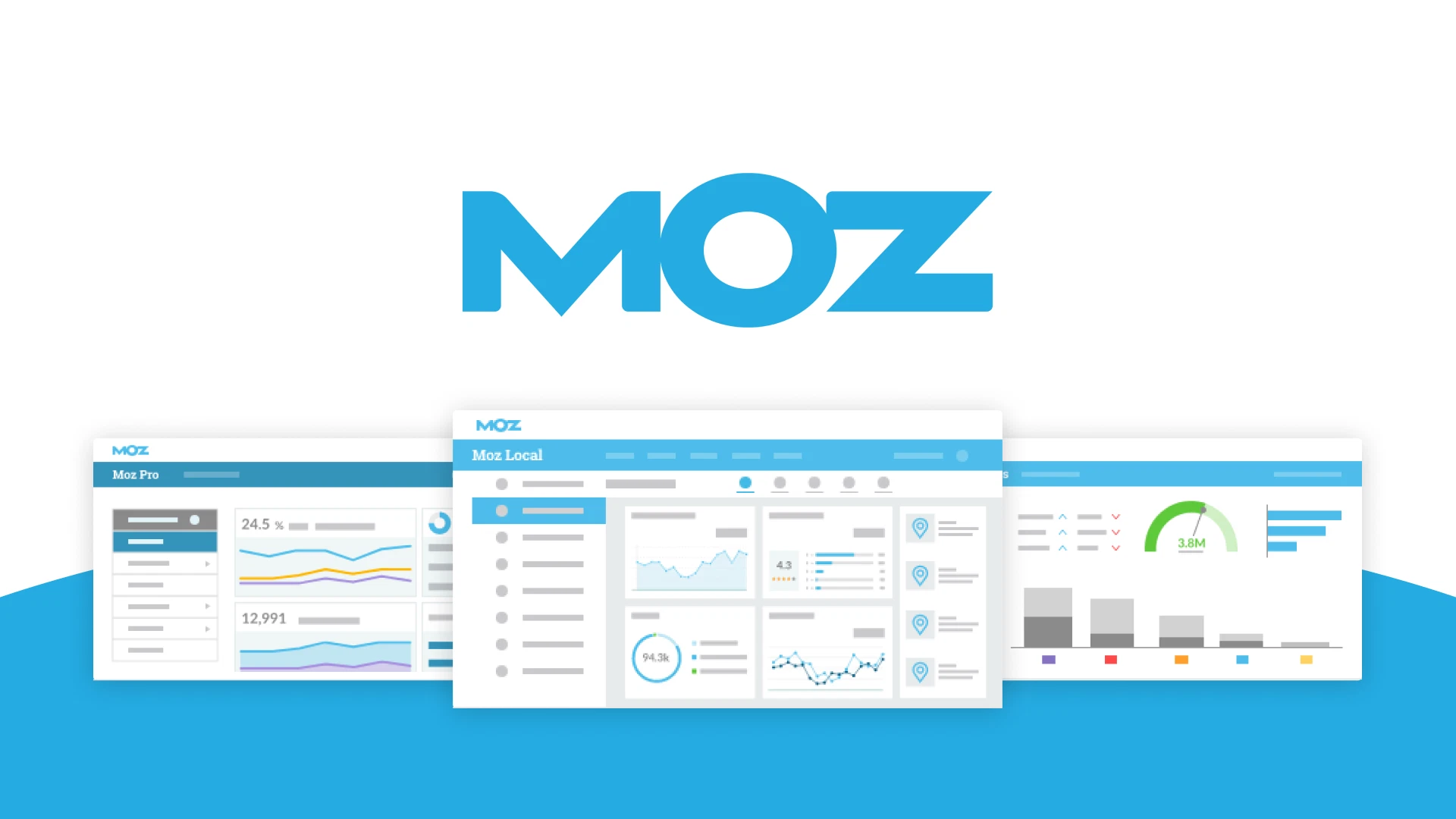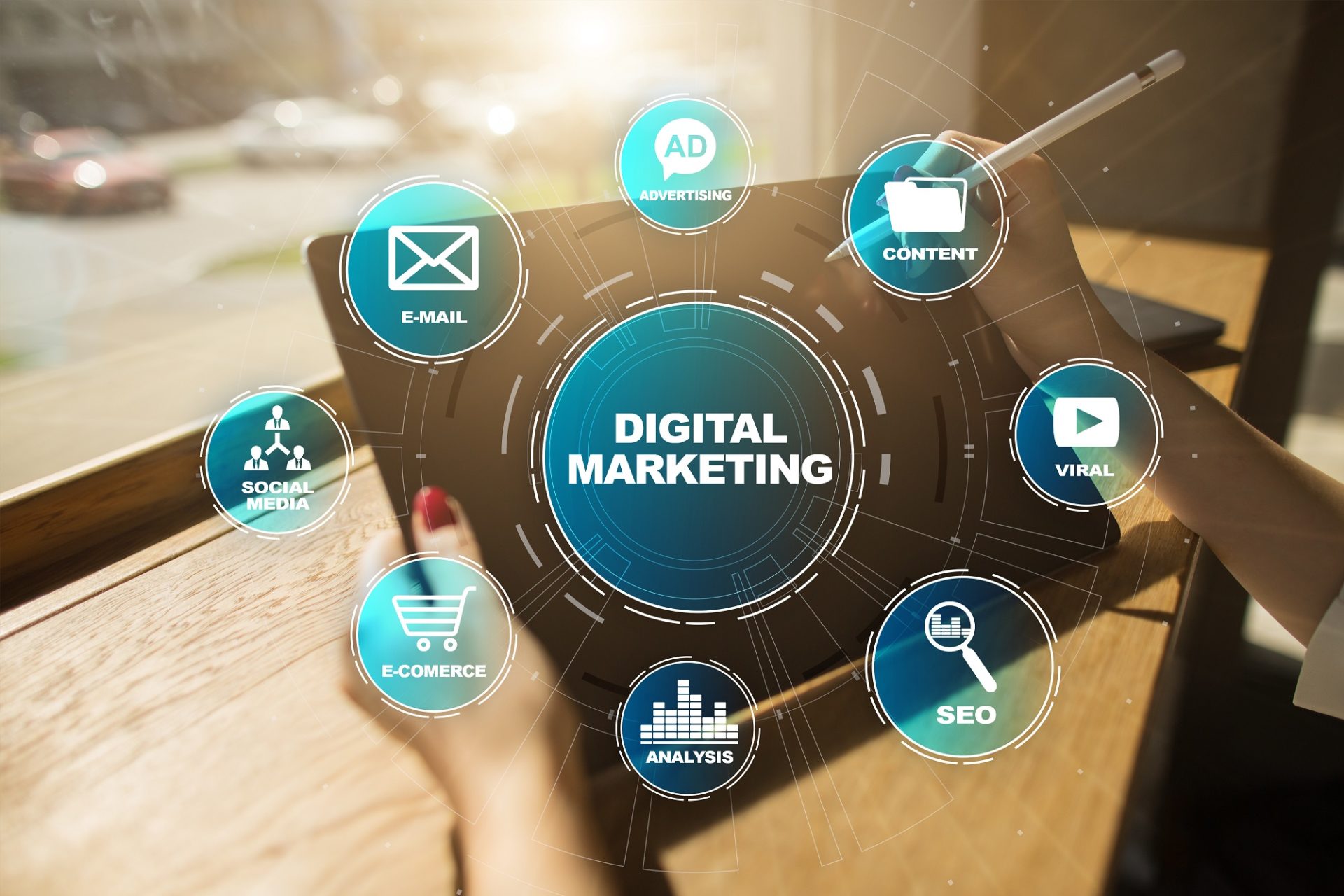SEO and marketing are two interrelated but distinct disciplines at the core of modern digital business. While the second is the broad practice of promoting, selling, and distributing a product or service, SEO is a specialized tactic within digital marketing that focuses on increasing visibility in search engine results pages (SERPs). Despite the differences in scope, search engine optimization and marketing are inextricably linked, with SEO often forming an essential component of a business’s overall marketing strategy.
Table of Contents
ToggleSEO and Marketing
To understand SEO and marketing in depth, it is helpful to begin by defining each and then exploring how they intersect, support one another, and evolve over time. Moreover, it is vital to examine the strategies, tools, best practices, and challenges that professionals face in the modern landscape. By the end of this exploration, you should have a clear, detailed understanding of both search engine optimization and marketing, their integration, and their role in achieving sustainable business growth.
Defining Marketing in the Digital Age
To start defining SEO and marketing, the second one is traditionally defined as the process of understanding customer needs, creating value, and communicating that value to drive sales. It encompasses market research, product development, pricing, promotion, distribution, and after-sales service. In the digital age, marketing has expanded to include channels like social media, email, content marketing, online advertising, and of course, search engines.
Digital marketing represents a paradigm shift in the way businesses connect with customers. It is highly measurable, scalable, and targeted. Instead of relying solely on traditional methods such as print ads or broadcast media, businesses can leverage data-driven campaigns that reach precisely defined audiences with personalized messages. Digital marketing also offers unparalleled opportunities for engagement and feedback, allowing companies to refine their approaches continuously.
SEO and marketing strategies are built around a few core principles, namely understanding the customer, creating compelling offers, delivering those offers effectively, and building lasting relationships. Successful marketing is customer-centric and data-informed. It integrates creativity, analytics, psychology, and technology to achieve results.
What is SEO ?
As for the first part of SEO and marketing, search engine optimization is the practice of optimizing a website and its content to improve visibility in search engine results. It is both an art and a science, involving technical, content-based, and strategic elements. SEO aims to make a website more appealing to search engines like Google, Bing, and others, so that it ranks higher for relevant search queries.
SEO is not about tricking search engines, but it is about aligning a site’s structure, content, and user experience (UX) with what search engines aim to provide to users. At its best, search engine optimization is user-focused. It seeks to deliver valuable, accessible, and well-organized information that meets search intent.
Before diving deep in SEO and marketing, search engine optimization can be divided into several main categories. On-page optimizing works on the content and HTML source code of a page, including keywords, meta tags, headings, internal linking, and content quality.
On the other hand, off-page SEO consists on building external signals of authority, primarily through backlinks, brand mentions, and social engagement. Search engine optimization has a third category which is the technical aspect, improving site speed, mobile-friendliness, crawlability, indexing, structured data, and HTTPS security.
Furthermore, local SEO optimizes for location-based searches, and it is important for businesses with physical premises or service areas. Last but not least, content search engine optimization is about high-quality, relevant, and useful content that satisfies user intent and earns organic visibility. SEO and marketing are a long-term investments that require sustained effort. Unlike paid advertising, SEO does not deliver immediate traffic in exchange for budget outlay. Instead, SEO builds lasting organic visibility that can drive consistent, cost-effective traffic over time.
The Role of Search in Modern Marketing
SEO and marketing have transformed the way people find information, products, and services. Billions of searches happen daily, many with strong commercial intent. People often turn to search engines at critical moments in the buying journey, when they research problems, compare solutions, and decide on purchases.
This behavior makes search an extraordinarily valuable marketing channel. By appearing in search results when potential customers are looking for what you offer, you meet them at their moment of need. This is what marketers call intent-based marketing. SEO enables businesses to capture organic search traffic, making it one of the highest-ROI channels in digital marketing.
SEO and marketing are also trusted sources of information. When a business ranks highly in organic results, it earns credibility and authority in the eyes of users. This trust is difficult to replicate with paid advertising alone.
Because of these factors, SEO is not just a technical practice, but a fundamental marketing strategy. It intersects with branding, content marketing, user experience (UX), and conversion rate optimization (CRO).
The Integration of SEO and Marketing Strategy
For SEO to deliver maximum value, it cannot be an isolated effort, but must be integrated into the broader marketing strategy. This integration ensures that search engine optimization efforts align with the business’s goals, messaging, and target audience.
One of the ways SEO and marketing are related is by amplifying content marketing, which involves creating valuable, relevant, and consistent content to attract and retain a defined audience. However, even the best of content fails if no one sees it. SEO ensures that it is discoverable in search engines. By targeting keywords and optimizing for intent, SEO drives organic traffic, extending reach and impact.
SEO also informs marketing strategy by providing valuable data about customer behavior. Keyword research reveals how people search, what they want to know, and how they describe their problems. This insight helps marketers craft more compelling messaging and identify new opportunities.
Moreover, SEO and marketing work synergistically. For example, paid search campaigns (PPC) can test keyword effectiveness before investing in long-term organic optimization. Social media can drive traffic to SEO-optimized content, which in turn earns backlinks and boosts rankings. Email marketing can distribute SEO-focused content to loyal subscribers, increasing engagement metrics that may indirectly benefit rankings.
The Evolution of SEO and Marketing
SEO and marketing have both evolved significantly over the past decades. In the early days of the web, search engine optimization was often a manipulative practice. Techniques like keyword stuffing, link farms, and cloaking sought to game search engine algorithms. This unethical SEO delivered short-term results but risked severe penalties when engines updated their algorithms.
Google’s algorithm updates over the years have made SEO more sophisticated and user-focused. Major updates like Panda, which targeted thin or low-quality content, Penguin, penalizing manipulative link practices, and Hummingbird, which improved understanding of search intent, forced marketers to prioritize quality, relevance, and user experience.
Today, SEO and marketing are deeply aligned with content quality, semantic relevance, and technical best practices. Machine learning (ML) and natural language processing enable search engines to better understand context and intent. Voice search, mobile-first indexing, and local optimization have further diversified the SEO landscape.
Marketing itself has also transformed. The rise of digital channels has led to a shift from mass-market broadcast approaches to targeted, data-driven strategies. Personalization, automation, inbound marketing, and account-based marketing are examples of modern tactics that prioritize relevance and engagement over sheer reach.
Content as the Heart of SEO and Marketing
One of the most important intersections between SEO and marketing is content, which is the medium through which the broad strategy communicates value to customers. It is the currency of search engine optimization. Content marketing and SEO are so closely linked that it is often difficult to separate them. Effective search engine optimization relies on high-quality content that satisfies user intent. Conversely, marketing needs to ensure that content is discoverable, thanks to SEO.
Content can take many forms, including blog posts, videos, infographics, podcasts, case studies, white papers, landing pages, product descriptions, and more. The key is that it must be valuable to the audience, answering questions, solving problems, entertaining, educating, or inspiring.
SEO and marketing bring a strategic framework, involving keywords research, competitors analysis, structuring content for readability as well as relevance, and optimizing metadata. It also involves measuring performance, adjusting strategies, and iterating for improvement.
User Experience (UX) and SEO
Another critical area where SEO and marketing overlap is user experience. Search engines aim to deliver the best possible results to users. Therefore, they increasingly reward websites that offer excellent UX. Elements of UX that affect SEO include site speed, mobile responsiveness, intuitive navigation, clear calls to action, and accessible design. Technical factors like core web vitals, such as loading performance, interactivity, and visual stability, are now ranking signals in Google’s algorithm.
Good UX is also good marketing. A well-designed, easy-to-use website builds trust, reduces friction in the conversion process, and increases customer satisfaction. This synergy means that investments in UX benefit both SEO and marketing outcomes like lead generation and sales.
Technical Foundations of SEO
Technical SEO and marketing is essential to ensure that search engines can crawl, index, and understand a website. This involves optimizing site architecture, improving load times, implementing HTTPS, creating XML sitemaps, and fixing errors that hinder indexing.
For marketing teams, technical SEO can seem daunting or overly specialized. However, ignoring it is a mistake. Even the best content cannot rank if search engines cannot access or understand it. Modern search engine optimization, on the technical aspect, also includes implementing structured data to help search engines better interpret content. Structured data can enable rich results like star ratings, FAQs, product information, and event listings in search results, improving visibility and click-through rates (CTR).
Off-Page SEO and Marketing Authority
Off-page SEO primarily involves earning backlinks from other websites. Search engines view these as votes of confidence. A site with many high-quality, relevant backlinks is seen as more authoritative and trustworthy. Building authority through off-page SEO requires a combination of content quality, outreach, relationship-building, and sometimes digital PR.
Link building is often misunderstood as a purely technical or manipulative practice, but effective link building is fundamentally SEO and marketing. It involves promoting valuable content, fostering partnerships, and earning editorial mentions. Other off-page signals include brand mentions, social engagement, and user reviews. These signals help search engines gauge a site’s reputation and relevance.
Local SEO and Marketing for Small Businesses
For businesses with physical locations or defined service areas, local SEO is critical. It optimizes a business’s online presence to attract customers in a specific geographic area. Key elements of local SEO include optimizing Google Business Profiles, managing local citations, earning positive reviews, and creating location-specific content. Local SEO also involves ensuring that name, address, and phone number information is consistent across the web.
SEO and marketing for local businesses often relies heavily on local optimization because people searching for nearby products or services have high intent to purchase. Optimizing locally is one of the most cost-effective ways for small businesses to compete against larger brands.
Analytics and Measurement in SEO and Marketing
Marketing has always depended on measurement, but digital channels offer unprecedented tracking and analysis capabilities. SEO is no exception. Measuring its success involves monitoring a variety of metrics such as organic traffic, rankings for target keywords, click-through as well as bounce rates, dwell time, conversions, revenue from organic traffic, backlinks, plus crawl errors and indexing status. Tools like Google Analytics, Search Console, Ahrefs, SEMrush, Moz, and others provide detailed data about SEO performance, informing marketing decisions, allowing teams to refine strategies, identify opportunities, and demonstrate ROI.
The Challenges of SEO and Marketing Integration
While SEO and marketing are natural allies, integrating them effectively can be challenging. Silos between search engine optimization teams and broader marketing ones can lead to misalignment. For example, marketers may create content without considering search intent or keyword opportunities. Conversely, SEO specialists might focus narrowly on rankings without supporting broader brand messaging. Effective integration requires collaboration, shared goals, and clear communication. SEO should be embedded in the content planning process from the start.
Marketing teams should understand basic SEO principles, while specialists of search engine optimization should appreciate the brand’s voice and customer personas. Another important challenge is the long-term nature of SEO. Unlike paid advertising, search engine optimization often requires months to deliver significant results. This can create tension when marketing teams are under pressure to deliver immediate returns. Setting realistic expectations and balancing short-term tactics with long-term strategy is essential.
Future Trends in SEO and Marketing
The world of SEO and marketing is dynamic. Search engines continually evolve, and consumer behavior changes with new technologies. Search engines increasingly use machine learning to interpret queries, understand content, and personalize results. Marketers must focus on creating high-quality, semantically rich content that aligns with evolving algorithms. As smart speakers and mobile assistants become widespread, optimizing for conversational, long-tail queries will become more important. Technologies that let users search with images, like Google Lens, will create new opportunities and challenges for SEO.
Google is increasingly providing answers directly in SERPs via featured snippets and knowledge panels. SEO strategies must adapt to capture visibility even when clicks decline. Changing privacy regulations and reduced tracking capabilities will reshape digital marketing. SEO, which does not rely on third-party cookies, may become even more important. Beyond ranking well, marketers must deliver engaging, interactive, and personalized content experiences to retain and convert visitors.
SEO and marketing are complementary disciplines essential for modern business success. Search engine optimization is not merely a technical afterthought, but a strategic pillar of the digital strategy. It ensures that a brand is discoverable when customers search for solutions, building authority, trust, and lasting organic traffic.
At the same time, SEO cannot succeed in isolation. It must be integrated with broader marketing goals, aligned with customer needs, and supported by high-quality content, excellent user experience, and consistent brand messaging.
For businesses of all sizes, mastering the integration of SEO and marketing offers a sustainable competitive advantage. It is an investment in visibility, credibility, and growth that pays high over time. As the digital landscape continues to evolve, businesses that prioritize SEO and marketing as collaborative, customer-centered practices will be best positioned to thrive.
SEO and marketing share a common purpose, which is to connect businesses with the people who need what they offer. When done well, they not only drive traffic and sales but also build lasting relationships and deliver genuine value to customers. This is the true promise of SEO and marketing working in harmony, a promise that will remain vital no matter how technology or consumer habits change in the years ahead.
As businesses look to the future, the need for adaptability in SEO and marketing strategies cannot be overstated. The rapid pace of technological change means that what works today may need refinement tomorrow. Marketers and SEO professionals must cultivate a mindset of continuous learning and experimentation. This includes staying current with search engine algorithm updates, consumer trends, and new tools or platforms that may reshape how people discover and engage with brands.
Moreover, the importance of ethical marketing and SEO is growing. Consumers are more aware than ever of issues such as data privacy, transparency, and social responsibility. Brands that practice manipulative tactics or deceptive marketing risk damaging their reputations and losing customer trust. Instead, sustainable success lies in delivering real value, being transparent about intentions as well as practices, and prioritizing long-term relationships over short-term gains.
Education and collaboration across teams will also play a crucial role in future success. Organizations that break down silos between marketing, SEO, content, design, development, and analytics can create more unified, effective strategies. This holistic approach ensures that every aspect of the customer journey is optimized, from initial discovery via search engines to conversion and retention. Ultimately, by viewing SEO not as an isolated task but as an integrated element of a broader marketing vision, businesses can better serve their customers, strengthen their brands, and achieve lasting growth.









